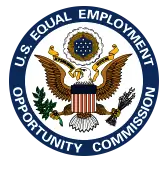EEOC Employment Law Lawyer
The Federal Equal Employment Opportunity Commission abbreviated, “EEOC” handles employment discrimination claims based upon:

- Age
- Disability
- Equal Pay/Compensation
- Genetic Information
- Harassment
- National Origin
- Pregnancy
- Race/Color
- Religion
- Retaliaion
- Sex
- Sexual Harassment
Although California state discrimination laws are similar to the Federal Discrimination Laws the EEOC enforces, California employment discrimination laws are actually broader than Federal Discrimination Laws enforced by the EEOC. For example, the definition of who a supervisor is for the purpose of sexual harassment is much more favorable to the employee under California discrimination laws than EEOC enforced Federal Discrimination Laws. California discrimination laws are also much more favorable to the employee when it comes to disability discrimination than the Federal Discrimination laws enforced by the EEOC
By hiring the Employment Lawyers Group, you will take the burden off your shoulder of having to understand what the best discrimination laws are to use. When you hire the Employment Lawyers Group we will guide you through the process of doing what is called Exhausting Administrative Remedies with the government whether it is the EEOC or the DFEH (the state enforcement agency for California discrimination laws).
Call 1-877-525-0700 to speak to one of our discrimination lawyers familiar with the EEOC process as well as all laws pertaining to employment discrimination in California.
1) Age Discrimination In The Workplace
Age discrimination involves treating someone (an applicant or employee) less favorably because of his age.
The Age Discrimination in Employment Act (ADEA) only forbids age discrimination against people who are age 40 or older. It does not protect workers under the age of 40, although some states do have laws that protect younger workers from age discrimination.
It is not illegal for an employer or other covered entity to favor an older worker over a younger one, even if both workers are age 40 or older.

Discrimination can occur when the victim and the person who inflicted the discrimination are both over 40.
Age Discrimination & Work Situations
The law forbids discrimination when it comes to any aspect of employment, including hiring, firing, pay, job assignments, promotions, layoff, training, fringe benefits, and any other term or condition of employment.
Age Discrimination & Harassment
It is unlawful to harass a person because of his or her age.
Harassment can include, for example, offensive remarks about a person’s age. Although the law doesn’t prohibit simple teasing, offhand comments, or isolated incidents that aren’t very serious, harassment is illegal when it is so frequent or severe that it creates a hostile or offensive work environment or when it results in an adverse employment decision (such as the victim being fired or demoted).
The harasser can be the victim’s supervisor, a supervisor in another area, a co-worker, or someone who is not an employee of the employer, such as a client or customer.
Age Discrimination & Employment Policies/Practices
An employment policy or practice that applies to everyone, regardless of age, can be illegal if it has a negative impact on applicants or employees age 40 or older and is not based on a reasonable factor other than age (RFOA).
Age Discrimination Settlements:
- $155,321 settlement in 2014 dollars for a San Gabriel Valley Woman Fired Due to Age
- $170,457 settlement in 2014 dollars for a Tarzana Driver Fired at Age 44
- $125,000 settlement for Palmdale Landscape Supervisor Selected for Layoff Due to Age
2) Disability Discrimination ADA
Disability discrimination occurs when an employer or other entity covered by the Americans with Disabilities Act, as amended, or the Rehabilitation Act, as amended, treats a qualified individual with a disability who is an employee or applicant unfavorably because she has a disability. Click here to read the article on Federal Disability Discrimination (ADA).
3) Equal Pay Discrimination Law
The Equal Pay Act requires that men and women in the same workplace be given equal pay for equal work. The jobs need not be identical, but they must be substantially equal. Job content (not job titles) determines whether jobs are substantially equal. All forms of pay are covered by this law, including salary, overtime pay, bonuses, stock options, profit sharing and bonus plans, life insurance, vacation and holiday pay, cleaning or gasoline allowances, hotel accommodations, reimbursement for travel expenses, and benefits. If there is an inequality in wages between men and women, employers may not reduce the wages of either sex to equalize their pay.

An individual alleging a violation of the EPA may go directly to court and is not required to file an EEOC charge beforehand. The time limit for filing an EPA charge with the EEOC and the time limit for going to court are the same: within two years of the alleged unlawful compensation practice or, in the case of a willful violation, within three years. The filing of an EEOC charge under the EPA does not extend the time frame for going to court.
Equal Pay/Compensation and Sex Discrimination
Title VII also makes it illegal to discriminate based on sex in pay and benefits. Therefore, someone who has an Equal Pay Act claim may also have a claim under Title VII.
Other Types of Discrimination
Title VII, the ADEA, and the ADA prohibit compensation discrimination on the basis of race, color, religion, sex, national origin, age, or disability. Unlike the EPA, there is no requirement under Title VII, the ADEA, or the ADA that the jobs must be substantially equal.
Our firm recently handled an employment discrimination case in which the pay was not equal between Latino and non-Latino workers at a Los Angeles employer. Sometimes pay discrimination is also national origin or race discrimination.
4) Genetic Information Discrimination In Employment
Title II of the Genetic Information Nondiscrimination Act of 2008 (GINA), which prohibits genetic information discrimination in employment, took effect on November 21, 2009.
Under Title II of GINA, it is illegal to discriminate against employees or applicants because of genetic information. Title II of GINA prohibits the use of genetic information in making employment decisions, restricts employers and other entities covered by Title II (employment agencies, labor organizations and joint labor-management training and apprenticeship programs – referred to as “covered entities”) from requesting, requiring or purchasing genetic information, and strictly limits the disclosure of genetic information. Click here to read the entire article on Generic Information Discrimination.
5) Employment Harassment Discrimination
Harassment is a form of employment discrimination that violates Title VII of the Civil Rights Act of 1964, the Age Discrimination in Employment Act of 1967, (ADEA), and the Americans with Disabilities Act of 1990, (ADA).
Harassment is unwelcome conduct that is based on race, color, religion, sex (including pregnancy), national origin, age (40 or older), disability or genetic information. Harassment becomes unlawful where 1) enduring the offensive conduct becomes a condition of continued employment, or 2) the conduct is severe or pervasive enough to create a work environment that a reasonable person would consider intimidating, hostile, or abusive. Anti-discrimination laws also prohibit harassment against individuals in retaliation for filing a discrimination charge, testifying, or participating in any way in an investigation, proceeding, or lawsuit under these laws; or opposing employment practices that they reasonably believe discriminate against individuals, in violation of these laws.

Petty slights, annoyances, and isolated incidents (unless extremely serious) will not rise to the level of illegality. To be unlawful, the conduct must create a work environment that would be intimidating, hostile, or offensive to reasonable people.
Offensive conduct may include, but is not limited to, offensive jokes, slurs, epithets or name calling, physical assaults or threats, intimidation, ridicule or mockery, insults or put-downs, offensive objects or pictures, and interference with work performance. Harassment can occur in a variety of circumstances, including, but not limited to, the following:
- The harasser can be the victim’s supervisor, a supervisor in another area, an agent of the employer, a co-worker, or a non-employee.
- The victim does not have to be the person harassed, but can be anyone affected by the offensive conduct.
- Unlawful harassment may occur without economic injury to, or discharge of, the victim.
Prevention is the best tool to eliminate harassment in the workplace. Employers are encouraged to take appropriate steps to prevent and correct unlawful harassment. They should clearly communicate to employees that unwelcome harassing conduct will not be tolerated. They can do this by establishing an effective complaint or grievance process, providing anti-harassment training to their managers and employees, and taking immediate and appropriate action when an employee complains. Employers should strive to create an environment in which employees feel free to raise concerns and are confident that those concerns will be addressed.
Employees are encouraged to inform the harasser directly that the conduct is unwelcome and must stop. Employees should also report harassment to management at an early stage to prevent its escalation.
Employer Liability For Harassment
The employer is automatically liable for harassment by a supervisor that results in a negative employment action such as termination, failure to promote or hire, and loss of wages. If the supervisor’s harassment results in a hostile work environment, the employer can avoid liability only if it can prove that: 1) it reasonably tried to prevent and promptly correct the harassing behavior; and 2) the employee unreasonably failed to take advantage of any preventive or corrective opportunities provided by the employer.
The employer will be liable for harassment by non-supervisory employees or non-employees over whom it has control (e.g., independent contractors or customers on the premises), if it knew, or should have known about the harassment and failed to take prompt and appropriate corrective action.
When investigating allegations of harassment, the EEOC looks at the entire record: including the nature of the conduct, and the context in which the alleged incidents occurred. A determination of whether harassment is severe or pervasive enough to be illegal is made on a case-by-case basis.
If you believe that the harassment you are experiencing or witnessing is of a specifically sexual nature, call our Labor Lawyers at 1-877-525-0700 for more information on sexual harassment.
6) National Origin Discrimination Lawyer
National origin discrimination involves treating people (applicants or employees) unfavorably because they are from a particular country or part of the world, because of ethnicity or accent, or because they appear to be of a certain ethnic background (even if they are not). Click here to read the entire article on National Origin Discrimination.
7) Pregnancy Discrimination Attorney
Pregnancy discrimination involves treating a woman (an applicant or employee) unfavorably because of pregnancy, childbirth, or a medical condition related to pregnancy or childbirth.
Pregnancy Discrimination & Work Situations

The Pregnancy Discrimination Act (PDA) forbids discrimination based on pregnancy when it comes to any aspect of employment, including hiring, firing, pay, job assignments, promotions, layoff, training, fringe benefits, such as leave and health insurance, and any other term or condition of employment.
Pregnancy Discrimination & Temporary Disability
If a woman is temporarily unable to perform her job due to a medical condition related to pregnancy or childbirth, the employer or other covered entity must treat her in the same way as it treats any other temporarily disabled employee. For example, the employer may have to provide light duty, alternative assignments, disability leave, or unpaid leave to pregnant employees if it does so for other temporarily disabled employees.
Additionally, impairments resulting from pregnancy (for example, gestational diabetes or preeclampsia, a condition characterized by pregnancy-induced hypertension and protein in the urine) may be disabilities under the Americans with Disabilities Act (ADA). An employer may have to provide a reasonable accommodation (such as leave or modifications that enable an employee to perform her job) for a disability related to pregnancy, absent undue hardship (significant difficulty or expense). The ADA Amendments Act of 2008 makes it much easier to show that a medical condition is a covered disability. For more information about the ADA and FMLA CLICK HERE
Pregnancy Discrimination & Harassment
It is unlawful to harass a woman because of pregnancy, childbirth, or a medical condition related to pregnancy or childbirth. Harassment is illegal when it is so frequent or severe that it creates a hostile or offensive work environment or when it results in an adverse employment decision (such as the victim being fired or demoted). The harasser can be the victim’s supervisor, a supervisor in another area, a co-worker, or someone who is not an employee of the employer, such as a client or customer.
Pregnancy, Maternity & Parental Leave
Under the PDA, an employer that allows temporarily disabled employees to take disability leave or leave without pay, must allow an employee who is temporarily disabled due to pregnancy to do the same.
An employer may not single out pregnancy-related conditions for special procedures to determine an employee’s ability to work. However, if an employer requires its employees to submit a doctor’s statement concerning their ability to work before granting leave or paying sick benefits, the employer may require employees affected by pregnancy-related conditions to submit such statements.
Further, under the Family and Medical Leave Act (FMLA) of 1993, a new parent (including foster and adoptive parents) may be eligible for 12 weeks of leave (unpaid or paid if the employee has earned or accrued it) that may be used for care of the new child. To be eligible, the employee must have worked for the employer for 12 months prior to taking the leave and the employer must have a specified number of employees.
Pregnancy & Workplace Laws
Pregnant employees may have additional rights under the Family and Medical Leave Act (FMLA), which is enforced by the U.S. Department of Labor. Nursing mothers may also have the right to express milk in the workplace under a provision of the Fair Labor Standards Act enforced by the U.S. Department of Labor’s Wage and Hour Division.
8) Race And Color Discrimination Law Firm
Race discrimination involves treating someone (an applicant or employee) unfavorably because he/she is of a certain race or because of personal characteristics associated with race (such as hair texture, skin color, or certain facial features). Color discrimination involves treating someone unfavorably because of skin color complexion.
Race/color discrimination also can involve treating someone unfavorably because the person is married to (or associated with) a person of a certain race or color or because of a person’s connection with a race-based organization or group, or an organization or group that is generally associated with people of a certain color.
Discrimination can occur when the victim and the person who inflicted the discrimination are the same race or color.

Race/Color Discrimination & Work Situations
The law forbids discrimination when it comes to any aspect of employment, including hiring, firing, pay, job assignments, promotions, layoff, training, fringe benefits, and any other term or condition of employment.
Race/Color Discrimination & Harassment
It is unlawful to harass a person because of that person’s race or color.
Harassment can include, for example, racial slurs, offensive or derogatory remarks about a person’s race or color, or the display of racially-offensive symbols. Although the law doesn’t prohibit simple teasing, offhand comments, or isolated incidents that are not very serious, harassment is illegal when it is so frequent or severe that it creates a hostile or offensive work environment or when it results in an adverse employment decision (such as the victim being fired or demoted).
The harasser can be the victim’s supervisor, a supervisor in another area, a co-worker, or someone who is not an employee of the employer, such as a client or customer.
Race/Color Discrimination & Employment Policies/Practices
An employment policy or practice that applies to everyone, regardless of race or color, can be illegal if it has a negative impact on the employment of people of a particular race or color and is not job-related and necessary to the operation of the business. For example, a “no-beard” employment policy that applies to all workers without regard to race may still be unlawful if it is not job-related and has a negative impact on the employment of African-American men (who have a predisposition to a skin condition that causes severe shaving bumps).
Examples of Our Race Discrimination Settlements
- $165,000 For race discrimination at a car dealership
- $150,000 For race discrimination at an oil refinery
9) Religious Discrimination At Work
Religious discrimination involves treating a person (an applicant or employee) unfavorably because of his or her religious beliefs. The law protects not only people who belong to traditional, organized religions, such as Buddhism, Christianity, Hinduism, Islam, and Judaism, but also others who have sincerely held religious, ethical or moral beliefs. Click here to read the entire article on Religious Discrimination.
10) Employee Retaliation Laws
All of the laws we enforce make it illegal to fire, demote, harass, or otherwise “retaliate” against people (applicants or employees) because they filed a charge of discrimination, because they complained to their employer or other covered entity about discrimination on the job, or because they participated in an employment discrimination proceeding (such as an investigation or lawsuit).
For example, it is illegal for an employer to refuse to promote an employee because she filed a charge of discrimination with the EEOC, even if EEOC later determined no discrimination occurred.
Retaliation & Work Situations
The law forbids retaliation when it comes to any aspect of employment, including hiring, firing, pay, job assignments, promotions, layoff, training, fringe benefits, and any other term or condition of employment.
11) Sex Discrimination Laws
Sex discrimination involves treating someone (an applicant or employee) unfavorably because of that person’s sex.
Sex discrimination also can involve treating someone less favorably because of his or her connection with an organization or group that is generally associated with people of a certain sex.
Discrimination against an individual because that person is transgender is discrimination because of sex in violation of Title VII. This is also known as gender identity discrimination. In addition, lesbian, gay, and bisexual individuals may bring sex discrimination claims. These may include, for example, allegations of sexual harassment or other kinds of sex discrimination, such as adverse actions taken because of the person’s non-conformance with sex-stereotypes.
Sex Discrimination & Work Situations
The law forbids discrimination when it comes to any aspect of employment, including hiring, firing, pay, job assignments, promotions, layoff, training, fringe benefits, and any other term or condition of employment.
Sex Discrimination Harassment
It is unlawful to harass a person because of that person’s sex. Harassment can include “sexual harassment” or unwelcome sexual advances, requests for sexual favors, and other verbal or physical harassment of a sexual nature. Harassment does not have to be of a sexual nature, however, and can include offensive remarks about a person’s sex. For example, it is illegal to harass a woman by making offensive comments about women in general.
Both victim and the harasser can be either a woman or a man, and the victim and harasser can be the same sex.
Although the law doesn’t prohibit simple teasing, offhand comments, or isolated incidents that are not very serious, harassment is illegal when it is so frequent or severe that it creates a hostile or offensive work environment or when it results in an adverse employment decision (such as the victim being fired or demoted).
The harasser can be the victim’s supervisor, a supervisor in another area, a co-worker, or someone who is not an employee of the employer, such as a client or customer.
Sex Discrimination & Employment Policies/Practices
An employment policy or practice that applies to everyone, regardless of sex, can be illegal if it has a negative impact on the employment of people of a certain sex and is not job-related or necessary to the operation of the business.
12) Workplace Sexual Harassment
It is unlawful to harass a person (an applicant or employee) because of that person’s sex. Harassment can include “sexual harassment” or unwelcome sexual advances, requests for sexual favors, and other verbal or physical harassment of a sexual nature.
Harassment does not have to be of a sexual nature, however, and can include offensive remarks about a person’s sex. For example, it is illegal to harass a woman by making offensive comments about women in general.
Both victim and the harasser can be either a woman or a man, and the victim and harasser can be the same sex.
Although the law doesn’t prohibit simple teasing, offhand comments, or isolated incidents that are not very serious, harassment is illegal when it is so frequent or severe that it creates a hostile or offensive work environment or when it results in an adverse employment decision (such as the victim being fired or demoted).
The harasser can be the victim’s supervisor, a supervisor in another area, a co-worker, or someone who is not an employee of the employer, such as a client or customer.
Harassment
It is illegal to harass an employee because of race, color, religion, sex (including pregnancy), national origin, age (40 or older), disability or genetic information.
It is also illegal to harass someone because they have complained about discrimination, filed a charge of discrimination, or participated in an employment discrimination investigation or lawsuit.
Harassment can take the form of slurs, graffiti, offensive or derogatory comments, or other verbal or physical conduct. Sexual harassment (including unwelcome sexual advances, requests for sexual favors, and other conduct of a sexual nature) is also unlawful. Although the law does not prohibit simple teasing, offhand comments, or isolated incidents that are not very serious, harassment is illegal if it is so frequent or severe that it creates a hostile or offensive work environment or if it results in an adverse employment decision (such as the victim being fired or demoted).
The harasser can be the victim’s supervisor, a supervisor in another area, a co-worker, or someone who is not an employee of the employer, such as a client or customer.
Harassment outside of the workplace may also be illegal if it involves work. For example, if a supervisor harasses an employee while driving the employee to a meeting. This is harassment outside of the workplace, but connected to an act of employment.



